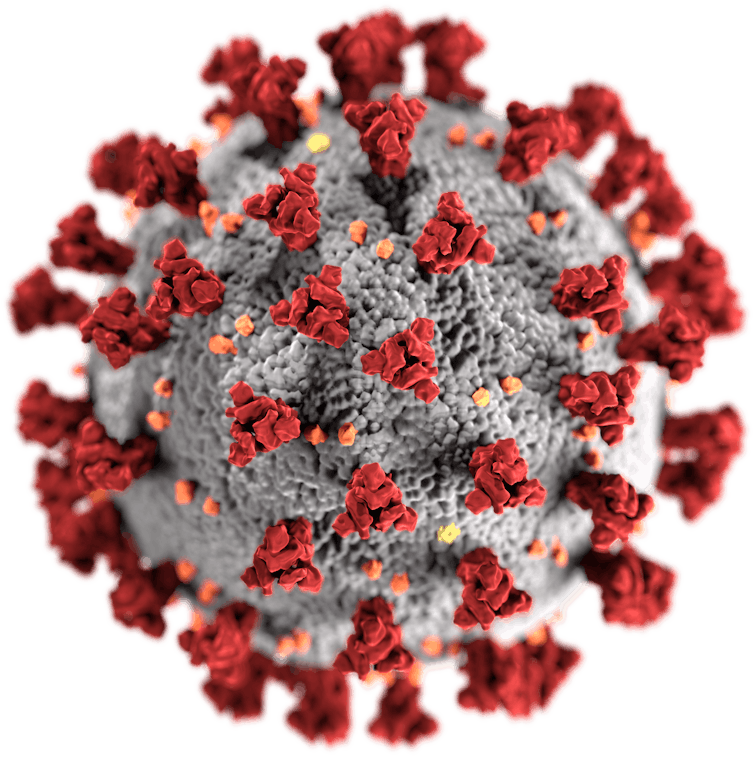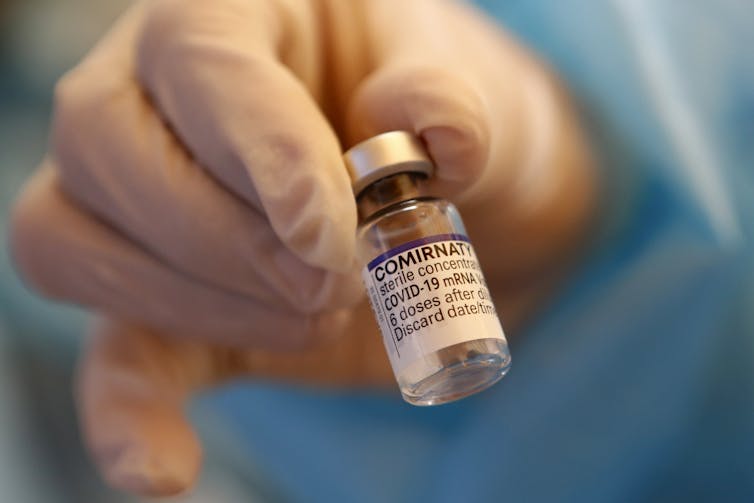China, the country that first detected the novel coronavirus, remains one of the few not to have imported one of the exceptionally effective mRNA COVID vaccines developed by Pfizer and Moderna. Instead, it has so far relied on vaccines developed by two Chinese companies, Sinovac and Sinopharm. However, this may be set to change. China is now developing its own mRNA vaccine.
Both the Sinovac and Sinopharm vaccines use a traditional design, containing whole forms of the coronavirus that have been inactivated – a tried-and-tested way of making vaccines that work. However, while these vaccines were initially quite good at stopping people getting symptomatic COVID, this protection waned significantly over time. These vaccines also offer poor protection against infection with omicron. This has put pressure on China to develop more effective vaccines, as it is pursuing a strict containment policy with the virus.
The mRNA vaccines work in a different way. They deliver a snippet of the coronavirus’s genetic code into the body, housed inside a lipid droplet. Once this gets inside cells, the code gets read and the cells produce copies of a key part of the coronavirus, its spike protein. The immune system then sees these spike proteins and mounts a response to them, generating immunity against the full virus should it be encountered in the future.
The mRNA vaccines initially generated high levels of protection against getting COVID. And while the protection offered by two doses wanes over time and offers little protection against infection with omicron, the mRNA vaccines appear to offer the best protection against an omicron infection when used as boosters. They also continue to offer very impressive protection against severe disease. Early results suggest a third dose of Sinovac, in comparison, is unable to stop infection with the new variant (though these results are still in preprint, meaning they’re awaiting review by other scientists).
Enter ARCoV
The mRNA vaccine technology therefore looks like it will offer the best protection against COVID in the future – hence China’s development of such a vaccine. But it hasn’t just jumped on the bandwagon. Development of ARCoV, China’s candidate mRNA vaccine, commenced in March 2020. The technology used is very similar to that in the Pfizer and Moderna vaccines, using modified messenger RNA from the virus, housed in a lipid droplet, to stimulate immunity.

But rather than getting the immune system to respond to the full spike protein of the virus like the Pfizer and Moderna vaccines do, ARCoV gets the body to make copies of the receptor binding domain (RBD), a key subpart of the virus’s spike protein that it uses to attach to and enter cells. This part of the virus seems to be especially recognisable by the immune system, which suggests that targeting it could have a particularly good protective effect.
Another potential advantage ARCoV has over the earlier mRNA vaccines is that it is stable at 2-8°C for at least a month, which would make transporting, storing and delivering the vaccine much easier.
How well does it work?
The results of an initial study of the vaccine in humans, where 120 volunteers were vaccinated with varying doses, were published in January 2022 in the Lancet. The vaccine was found to be safe, but there was a higher rate of fever after vaccination, especially at higher doses, than was seen in early studies of the other mRNA vaccines. However, these fevers were short lived.
The study also measured the levels of antibodies and T cells against the virus that the volunteers produced after being vaccinated. The best antibody and T-cell responses were seen in the intermediate-dose group, with higher doses leading to a lower response. It’s not 100% clear why this was the case, but this may be due to the body’s non-specific immune response (its general purpose defences that attack all sorts of foreign invaders) destroying the vaccine at higher doses before it could have its desired effect.
And even in those receiving the intermediate dose, the antibodies and T-cell responses recorded were also lower than those generated by the existing mRNA vaccines, which raises questions around how effective this vaccine will be. However, the results of a much larger ongoing study will be needed to properly assess this. That larger trial will involve over 28,000 participants across China, Mexico and Indonesia and will be using the intermediate dose that was shown to work best in this initial study.

Some interim results are to be expected in the coming months. There’s also another trial underway that’s studying giving ARCoV as a booster following the Sinovac or Sinopharm vaccines. The results of these studies – both in terms of whether there are any adverse events and how well ARCoV prevents infection, severe disease and death – will dictate the future of this vaccine and China’s future approach to COVID. Should it fail, will China seek to purchase the some of the proven Pfizer and Moderna mRNA vaccines instead? Time will tell.

